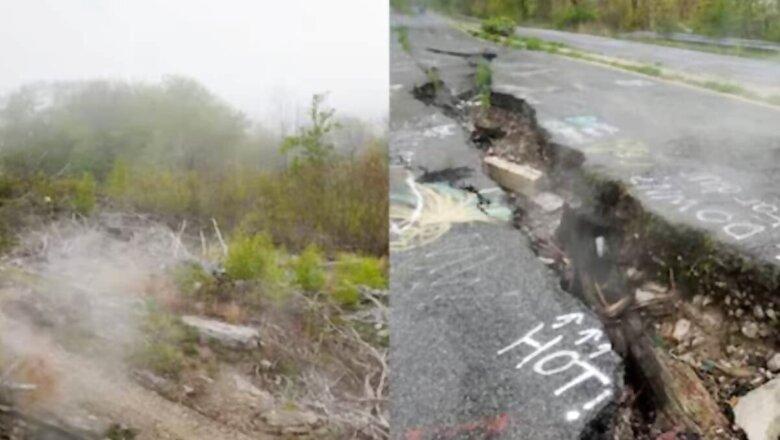
views
The small town of Centralia in the US has a fascinating and tragic history. Located in Columbia County, Centralia was once a thriving community with a population of around 1,000 people in the early 1960s. However, its fate changed dramatically due to an underground coal fire that began in 1962. The fire caused widespread destruction, spreading through the extensive network of underground mining tunnels, according to IFL Science.
Centralia is often labelled as a “ghost town” due to its strikingly desolate and abandoned state. As the fire spread through the coal mines, conditions became increasingly hazardous, prompting most of the town’s original population to relocate to safer areas. With the exodus of its residents, the once-bustling community was left largely empty. Even after 50 years, the fire is still burning. Despite numerous efforts to control or extinguish it, the fire remains active, fueled by the extensive coal deposits beneath the town.
History of Centralia:
Founded in the mid-19th century as a coal mining town, Centralia grew rapidly due to the coal industry’s expansion. It attracted many miners and their families, seeking employment in the region’s burgeoning coal mines. This growth was emblematic of the larger industrial boom occurring in Pennsylvania.
In the 1860s, the town was home to members of the Molly Maguires, a secret society of Ireland who made their way to American coal mines along with Irish immigrants. In the late 1860s, the Molly Maguires were suspected to have committed a series of violent acts within Centralia. As Pennsylvania historian Deryl B. Johnson notes, the Molly Maguires were implicated in everything from the murder of the town’s founder, Alexander Rae, to the death of the area’s first priest.
They were accused of using violence and intimidation to achieve their goals. Allegations included acts of sabotage, arson, and even murder. This violence was partly a response to the brutal treatment of miners and the harsh working conditions they endured.
In the early 1870s, a major crackdown on the Molly Maguires took place. The Pennsylvania state government, along with coal operators, launched investigations that led to numerous arrests. Many members were tried and convicted in highly publicised trials, often criticised for their unfairness and due process.
During the Great Depression, while many mine factories were closed, Centralia survived. By the 1890s, the town’s population grew to over 2,700, all relying on the mines for livelihood.. However, the 1962 underground coal fire made the town’s popularity short-lived. By the late 1960s, it was clear that the fire posed a serious and ongoing threat, as it was nearly impossible to contain due to the extensive network of coal seams.
Current Situation:
As the years went by, the ground beneath the city became hotter, reaching over 480 degrees Celcius in some locations. Greg Walter wrote for People Magazine in 1981, “Graves in the town’s two cemeteries are believed to have dropped into the abyss of fire that rages below them.”
In the 1990s, after spending $7 million trying to put out the fire, the state of Pennsylvania finally gave up. The fire reportedly could burn for another century if left uncontrolled.
Much of Centralia’s infrastructure remains abandoned. Buildings, homes, and roads are in various states of decay, creating an eerie and deserted landscape. The once-bustling town now features empty lots and dilapidated structures. One of the more notable remnants is the “Graffiti Highway,” a stretch of abandoned road covered in vibrant graffiti.
Despite the hazardous conditions, Centralia attracts visitors interested in its unique history and the ghost town’s visual impact. It has become a symbol of industrial disaster and environmental neglect.



















Comments
0 comment